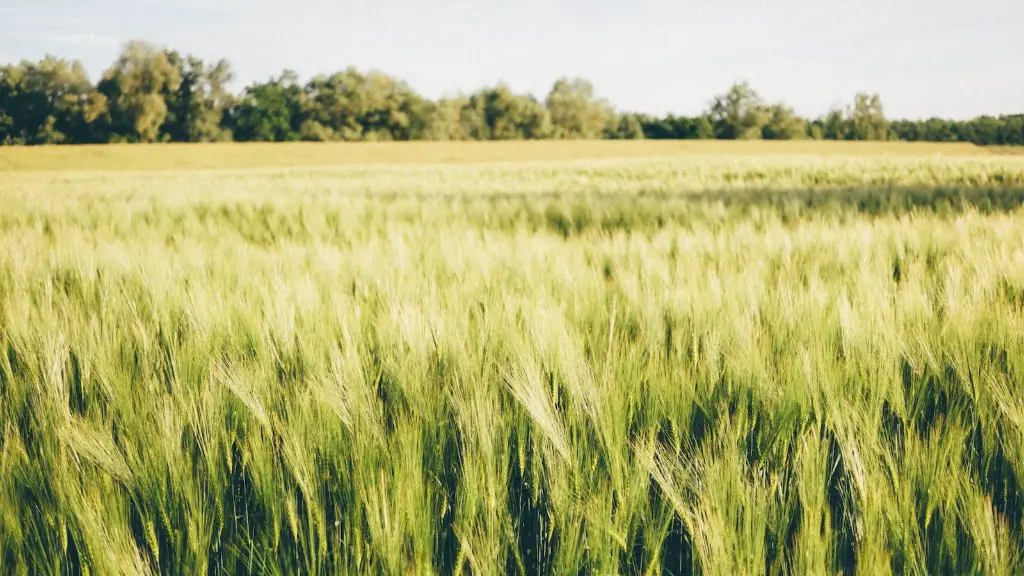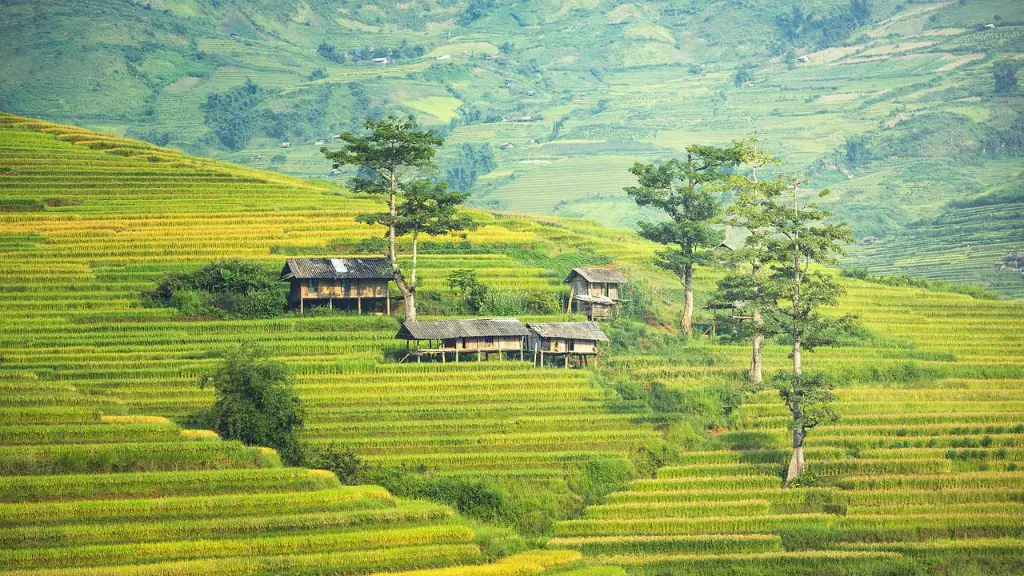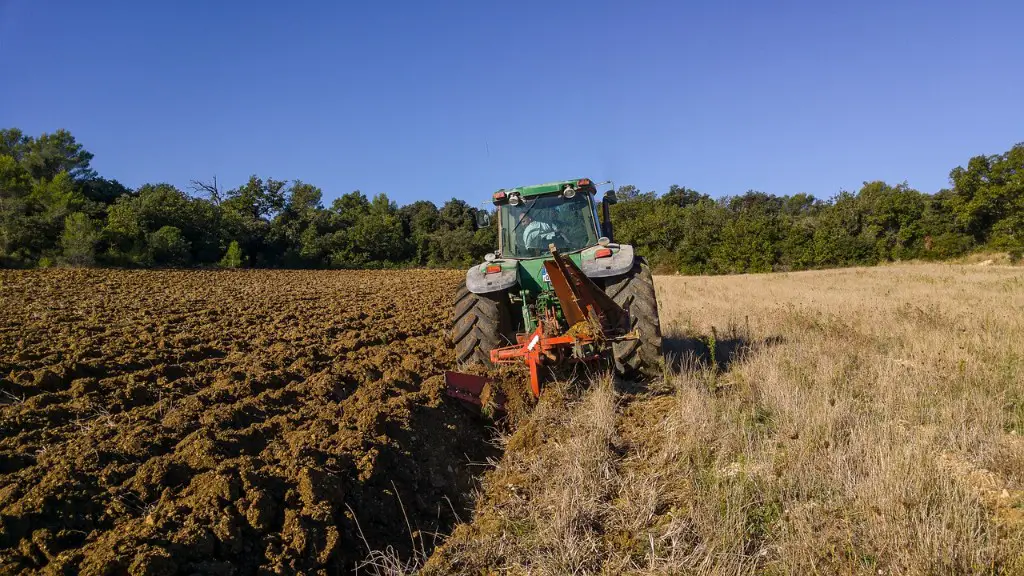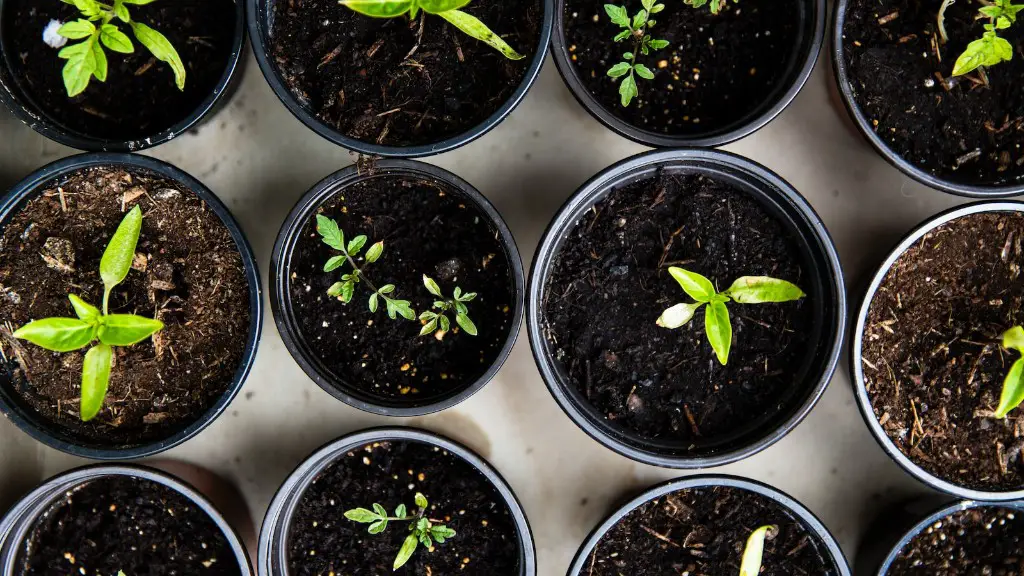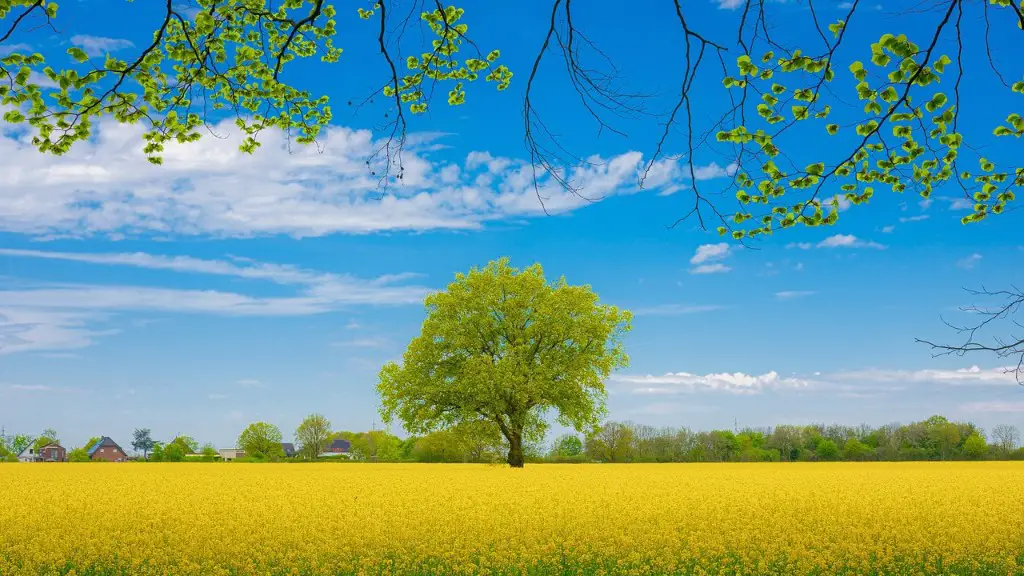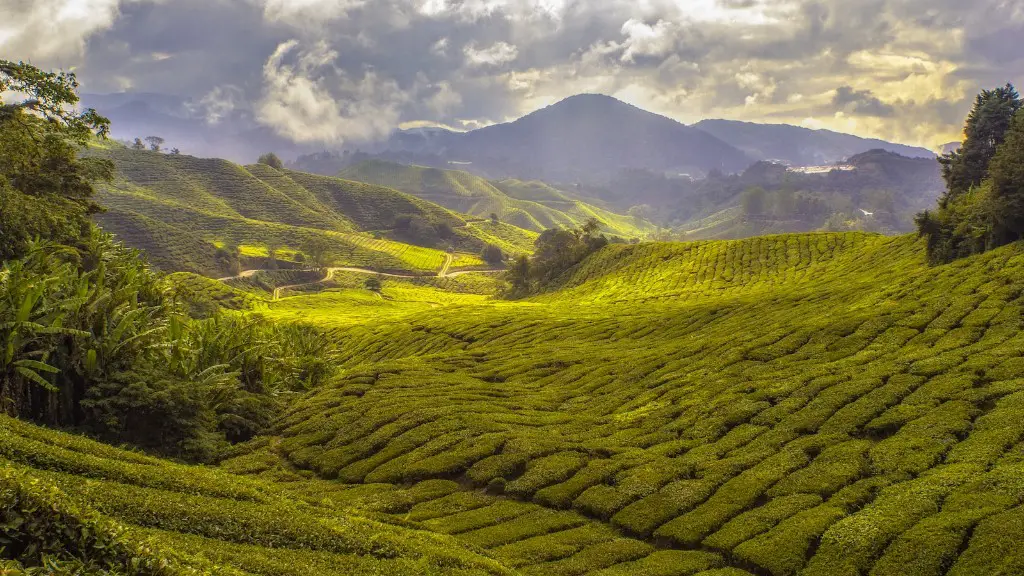Global climate change due to the release of greenhouse gases affects agriculture in a number of ways. Increasing temperatures can lead to the premature ripening of crops and the displacement of traditional growing regions for particular crops. Changes in precipitation patterns can lead to droughts or flooding, both of which can have devastating impacts on farms. Furthermore, extreme weather events are becoming more common, and can destroy crops, damage infrastructure, and harm livestock. Climate change also creates new opportunities for pests and diseases to spread, which can decimate crops.
Greenhouse gases, like water vapor and carbon dioxide, trap heat in the Earth’s atmosphere and cause the Earth’s average temperature to rise. This can lead to a number of problems for agriculture, such as:
-Higher temperatures can cause crop plants to wilt and dry out.
-Extreme weather events, like heat waves, droughts, and floods, can damage crops and lead to lower yields.
-Higher temperatures and extreme weather can also lead to the spread of pests and diseases that can damage crops.
What are greenhouse gases in agriculture industry?
Agricultural activities are a major source of greenhouse gas emissions, accounting for around 10% of total emissions globally. The three main greenhouse gases emitted by agriculture are carbon dioxide (CO2), nitrous oxide (N2O), and methane (CH4).
CO2 is emitted by all agricultural activities, including livestock respiration, soil cultivation, and the burning of crop residues. N2O is emitted from agricultural soils, particularly when they are fertilized with nitrogen-containing fertilizers. CH4 is emitted from livestock and from agricultural waste, such as manure and rice paddies.
Agricultural emissions of greenhouse gases are expected to grow in the future as global demand for food increases. Therefore, it is important to find ways to reduce these emissions. Some options include: improving agricultural practices, such as using more efficient fertilizers and manure management; switching to less greenhouse gas-intensive livestock; and using bioenergy crops for fuel.
Climate change has the potential to disrupt food availability, reduce access to food, and affect food quality. For example, projected increases in temperatures, changes in precipitation patterns, changes in extreme weather events, and reductions in water availability may all result in reduced agricultural productivity. This could lead to higher food prices and reduced food security for the most vulnerable populations.
How do greenhouses work in agriculture
Protected cropping is a type of horticulture that involves growing crops within structures that provide modified growing conditions and protection from pests, diseases, and bad weather. This type of cropping can help to improve yields and quality, while also reducing production costs.
Agriculture is one of the leading contributors to anthropogenic global warming, and reducing agricultural emissions—largely methane and nitrous oxide—could play a significant role in climate change mitigation.
Methane and nitrous oxide are two of the most potent greenhouse gases, and agriculture is responsible for a significant portion of global emissions of both gases. Reducing agricultural emissions of these gases would therefore be a key strategy in mitigating climate change.
There are a number of ways to reduce agricultural methane and nitrous oxide emissions, including:
-Improving agricultural practices to reduce methane emissions from livestock
-Reducing nitrous oxide emissions from agricultural soils
-Capturing methane from livestock waste
Reducing agricultural emissions of greenhouse gases is essential to mitigating climate change and protecting our planet for future generations.
What are the negative effects of climate change on agriculture?
Global warming can have negative impacts on crops, including reduced quantity and quality. High temperatures can shorten the growth period, reducing sugar content, causing bad coloration, and reducing storage stability in fruits. Weeds, blights, and harmful insects can also increase in agricultural crops. Finally, global warming can reduce land availability for agriculture.
Climate change is expected to have a negative impact on the yields of major commodity crops such as corn, rice, and oats. Rising temperatures and carbon dioxide concentrations may increase some crop yields, but these increases are expected to be outweighed by the negative impacts of climate change on crop production.
What is the effect of climate on agriculture?
Climate change is one of the biggest threats to agriculture and farmer livelihoods. Extreme weather events like floods, droughts and heatwaves are becoming more common and more severe, and they take a heavy toll on crops and soils. Soil degradation from climate change reduces crop yields and makes farming more difficult and less profitable. This discourages farmers and drives them to abandon their farms or seek new livelihoods. This is particularly hard on rural communities, where farm livelihoods are often the only source of income.
A greenhouse can be a wonderful addition to a garden, but there are also some potential disadvantages to consider. Greenhouses can be expensive to build and to heat, and they require constant monitoring, maintenance and care. They can also increase electrical and water bills. In some cases, a greenhouse may detract from the aesthetic appeal of a garden.
What is the value of greenhouses to agriculture
Greenhouse growing helps to limit the risks of floods and overheating as the crops are grown in a controlled environment. This means that the crops are not subject to the vagaries of the weather, which can often lead to devastating consequences for crops. In addition, greenhouses can be located in areas that are less prone to floods or overheating, further reducing the risks to the crops.
Farmers can play a role in mitigating climate change by growing biofuel feedstocks and installing alternative energy sources like solar panels and wind turbines. This would help to displace fossil fuels and reduce GHG emissions.
How does climate change affect food and agriculture?
Climate change is one of the main drivers of world hunger. As global temperatures and sea levels rise, the result is more extreme weather conditions such as heat waves, droughts, floods, and wildfires. These conditions make it difficult for farmers to grow food, and for the hungry to access it. With the world population projected to reach 9.7 billion by 2050, it is more important than ever to take action to mitigate the impacts of climate change and ensure food security for all.
A single whitefly can lay up to 500 eggs in its lifetime, and if left uncontrolled, a whitefly infestation can destroy an entire crop. To prevent this, it’s important to check your plants regularly for pests and to take measures to control them immediately if you find any.
Another problem that can arise from having a greenhouse is a lack of pollination. Although some plants can self-pollinate, most require bees or other insects to transfer pollen from the male parts of the flower to the female parts. Greenhouses can prevent bees and other insects from getting in, which can severely limit the amount of pollination that takes place.
To prevent this, you can either release bees into your greenhouse on a regular basis or hand-pollinate your plants yourself. Hand-pollination is a bit more time-consuming, but it’s much easier to control than relying on bees.
What are 5 consequences of the greenhouse effect
The main consequences of climate change are flooding of coastal cities, desertification of fertile areas, melting of glacial masses, and proliferation of devastating hurricanes.
A greenhouse allows for increased production due to ideal weather conditions year-round. This intensifies growth and allows for a greater density of crops.
What is the relationship between climate and agriculture?
Climate change affects agriculture in a number of ways; including through changes in average temperatures; rainfall and climate extremes (ie floods, drought, etc); changes in pests and diseases; changes in atmospheric carbon dioxide; and changes in the nutritional quality of some plants. All of these factors can have a devastating impact on crops, livestock, and the people who depend on them for their livelihoods.
Greenhouses help to keep the surrounding environment undisturbed and preserved. This is because they provide a controlled environment for plants to grow, meaning that there is no need for heavy machinery or chemicals. This is in contrast to conventional farming, which can be very damaging to the surrounding environment. As well as being more sustainable, greenhouse farming is also more efficient, as it requires less water and energy to maintain the desired conditions.
What are at least 3 factors that affect farming agriculture
In order to create successful crop growth, farmers must take into account the specific environmental conditions in their field. The four main environmental factors that will impact crop growth are the terrain, climate, soil properties, and soil moisture. By understanding how these factors influence plants, farmers can rotate their crops to make the most of their land.
The terrain of a field can be hilly, flat, or rocky. This will impact what type of machinery can be used to plant and harvest the crop. Flat fields are the easiest to work with, while hilly and rocky fields can be more difficult. Climate is another important factor, as different crops need different amounts of sunlight and rainfall. For example, some crops can tolerant drought conditions while others require consistent moisture.
The type of soil is also a consideration, as each type of soil has different properties that can impact plant growth. Soil can be heavy or light, sandy or clay-like, and rich or poor in nutrients. The amount of water that is available in the soil is also important. If the soil is too dry, crops will not be able to grow. However, if the soil is too wet, it can lead to problems with rot and fungi.
By taking into account
A lot of people think that you can only grow heat-loving crops in the summer, but that’s not true! You can actually grow a variety of different crops if you know what you’re doing. That being said, here are some tips on growing tender crops through the summer months:
-Make sure to water your plants regularly, as they will be susceptible to wilting in the heat.
-Try to plant your crops in shady areas to protect them from the strong rays of the sun.
-Think about using mulch to keep the soil moist and cool.
If you follow these tips, you should be able to grow a variety of crops successfully through the summer months!
Conclusion
Greenhouse gases affect agriculture by trapping heat in the atmosphere and causing the Earth’s surface to warm. This can lead to droughts, which can damage crops and lead to food shortages.
The increased levels of greenhouse gases in the atmosphere are causing a rise in the Earth’s average surface temperature. The resulting climate change is having a number of impacts on agriculture, including more extreme weather conditions, shifting growing seasons, and changes in pest and disease patterns. All of these impacts make it more difficult to produce food, and they are likely to cause an increase in food prices. In addition, as climate change continues, it is expected that agriculture will be increasingly affected, and that these impacts will become more severe.
